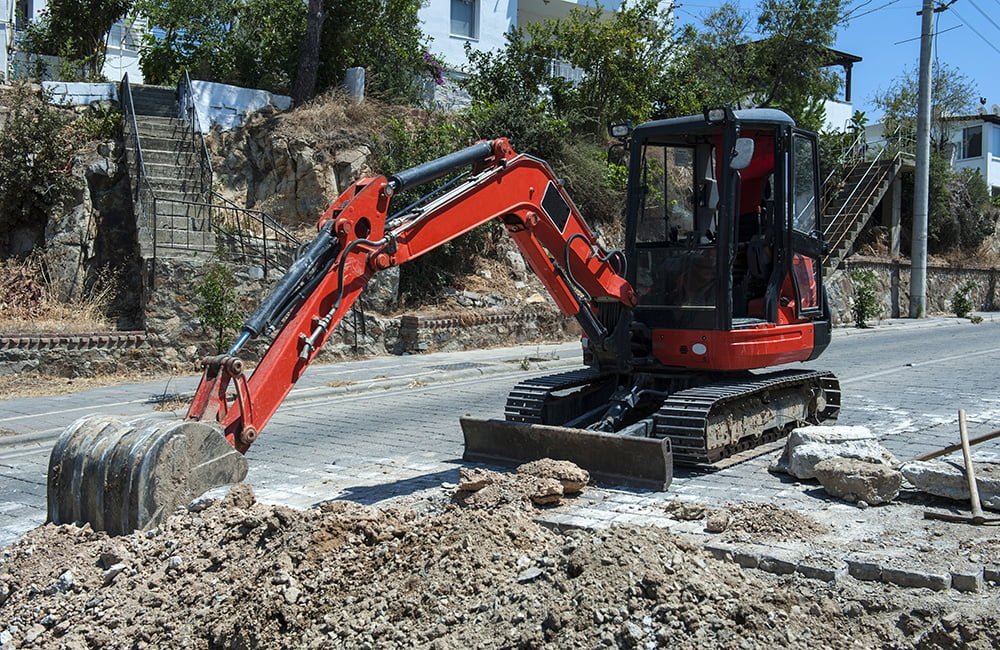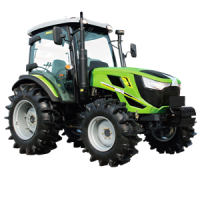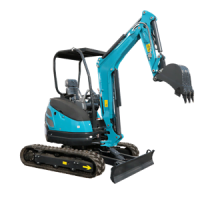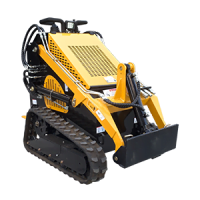Introduction
Mini Excavator Lifting Capacity: Understanding the Key Factors.When it comes to construction and excavation projects, having the right equipment is crucial for efficiency and safety. Mini excavators, also known as compact excavators, have gained popularity due to their versatility and compact size. One essential aspect to consider when operating a mini excavator is its lifting capacity. In this article, we will delve into the concept of mini excavator lifting capacity, exploring its significance and the factors that affect it.
Understanding Mini Excavator Lifting Capacity

Understanding the lifting capacity of a mini excavator is essential for safe and efficient operation. By having a clear understanding of the maximum weight that a mini excavator can safely lift and move, operators can prevent equipment failure, minimize downtime, and ensure the safety of personnel on the construction site.
Knowing the lifting capacity of a mini excavator is crucial because exceeding this limit can lead to damage to the equipment and pose serious risks to operators and those in the vicinity. By staying within the recommended lifting capacity, operators can maintain the longevity of the equipment and prevent accidents that may result in costly repairs or even injuries.
The lifting capacity of a mini excavator is typically measured in pounds or kilograms and varies depending on the specific make and model. It is important to refer to the equipment’s documentation or consult the manufacturer to determine the precise lifting capacity for a particular mini excavator.
In addition to the numerical value of the lifting capacity, it is also important to consider the factors that influence it. The hydraulic system of the mini excavator, including the hydraulic pump and cylinders, plays a significant role in generating the force required for lifting heavy loads. The efficiency of the hydraulic system, such as the flow rate and pressure of the hydraulic fluid, directly affects the lifting capacity.
The Importance of Knowing the Lifting Capacity
Knowing the lifting capacity of a mini excavator is of utmost importance when it comes to ensuring efficient and safe operations on construction sites. By having a clear understanding of the maximum weight that a mini excavator can lift and move, operators can make informed decisions, mitigate risks, and optimize productivity.
One key aspect of understanding the lifting capacity is the prevention of equipment overload. Operating a mini excavator beyond its lifting capacity can lead to excessive strain on the equipment’s components, resulting in accelerated wear and tear, potential breakdowns, and costly repairs. Moreover, overloading poses serious safety risks, as it compromises the stability and balance of the excavator, increasing the likelihood of accidents and injuries to operators and bystanders.
By knowing the lifting capacity, operators can carefully plan and execute lifting operations within safe limits. This involves assessing the weight of the load to be lifted and verifying that it falls within the excavator’s specified capacity. This proactive approach not only prevents damage to the equipment but also ensures the smooth progression of construction projects by minimizing unexpected interruptions and delays.
Determining Factors for Mini Excavator Lifting Capacity
The lifting capacity of a mini excavator is influenced by several determining factors that operators must consider to ensure safe and effective lifting operations. By understanding these factors, operators can make informed decisions, optimize the equipment’s performance, and maintain a high level of safety on construction sites.
One crucial determining factor is the hydraulic system of the mini excavator. The hydraulic pump and cylinders generate the necessary force to lift and move heavy loads. The efficiency of the hydraulic system, including factors such as the hydraulic fluid flow rate and pressure, directly impacts the lifting capacity of the excavator. Well-maintained and properly functioning hydraulic components are essential for maximizing the lifting capacity.
The length and configuration of the boom also play a significant role in the lifting capacity. Longer booms allow for a greater reach, but they may have a reduced lifting capacity compared to shorter booms. Operators must consider the specific requirements of their lifting tasks and choose the appropriate boom length and configuration accordingly. Factors such as the type of boom (mono boom or offset boom) and any additional extensions or attachments can also affect the lifting capacity and maneuverability of the mini excavator.
Hydraulic System
The hydraulic system of a mini excavator plays a significant role in determining its lifting capacity. The hydraulic pump and cylinders are responsible for generating the necessary force to lift and move heavy loads. The system’s overall efficiency, including the hydraulic fluid flow rate and pressure, affects the excavator’s lifting capacity.
Boom Length and Configuration
The length and configuration of the boom, the arm that extends from the mini excavator, impact its lifting capacity. Longer booms can reach greater distances but may have a reduced lifting capacity compared to shorter booms. The boom configuration, such as a mono boom or an offset boom, also affects lifting capacity and maneuverability.
Counterweight
The counterweight is positioned at the rear of the mini excavator and helps balance the weight during lifting operations. A properly sized and positioned counterweight enhances stability and lifting capacity. Increasing the counterweight can improve lifting capacity, but it may also affect the excavator’s balance and maneuverability.
Track Stability
The stability of the mini excavator’s tracks is crucial for safe lifting operations. Stable tracks provide a solid foundation and prevent the equipment from tipping over or losing balance during lifting tasks. Factors such as track width, ground conditions, and the use of outriggers influence the track stability and, consequently, the lifting capacity.
Operating Radius
The operating radius is the distance from the mini excavator’s center to the point where the load is lifted. The lifting capacity decreases as the operating radius increases. It is essential to consider the load chart provided by the manufacturer, which indicates the maximum lifting capacity at different operating radii.
Load Chart and Load Capacity Diagram
Manufacturers provide load charts and load capacity diagrams for each mini excavator model. These charts outline the lifting capacities at various boom angles, arm lengths, and operating radii. Operators must refer to these charts to determine the safe lifting capacity for a specific configuration and operating condition.
Safety Considerations
Safety should always be a top priority when operating a mini excavator. Factors such as slope stability, overhead obstructions, and working near other personnel should be carefully evaluated to ensure safe lifting operations. It is essential to follow all safety guidelines provided by the manufacturer and undergo proper training to minimize risks.
Optimizing Mini Excavator Lifting Capacity

Optimizing the lifting capacity of a mini excavator is essential for achieving efficient and safe lifting operations. By implementing specific strategies and practices, operators can maximize the equipment’s performance, ensure safety, and enhance productivity on construction sites.
Regular maintenance and inspection are key factors in optimizing the lifting capacity of a mini excavator. Routine checks of the hydraulic system, tracks, boom components, and counterweight are crucial to identify any issues that may affect the lifting capacity. By promptly addressing maintenance needs and ensuring proper lubrication, operators can maintain the equipment’s optimal performance and prevent unexpected breakdowns that could compromise the lifting capacity.
Operator training and skill development also play a significant role in optimizing the lifting capacity. Properly trained operators have a thorough understanding of the equipment’s capabilities, limitations, and safety protocols. They are skilled in load calculations, ensuring that the loads being lifted fall within the excavator’s specified capacity. Training programs should cover equipment handling, load estimation, safe lifting techniques, and maintenance practices. Well-trained operators can efficiently utilize the mini excavator’s lifting capacity while ensuring the safety of themselves and others on the job site.
Regular Maintenance and Inspection
Regular maintenance and inspection of the mini excavator are crucial to ensure its optimal performance and lifting capacity. This includes checking the hydraulic system, tracks, boom components, and counterweight. By identifying and addressing any issues promptly, operators can maintain the excavator’s lifting capabilities.
Operator Training and Skill
Proper operator training is essential for safe and efficient operation. Operators should undergo training programs that cover equipment handling, load calculations, safety procedures, and maintenance practices. Well-trained operators can effectively maximize the mini excavator’s lifting capacity while ensuring safety.
Proper Load Calculation
Accurately calculating the weight of the load to be lifted is vital for staying within the excavator’s lifting capacity. Operators should consider not only the weight of the load but also its center of gravity and any additional forces acting on it. This ensures that the lifting operation is performed safely and within the equipment’s limits.
Conclusion
In conclusion, understanding and optimizing the lifting capacity of a mini excavator are crucial for successful and safe operations in the construction industry. By having a clear knowledge of the equipment’s maximum lifting capacity and considering the various factors that influence it, operators can make informed decisions, prevent equipment overload, and mitigate potential risks.
Knowing the lifting capacity allows operators to plan and execute lifting operations within safe limits, minimizing the chances of equipment failure and accidents. By staying within the recommended capacity, operators can ensure the stability and balance of the mini excavator, promoting a safe working environment for themselves and those around them. This adherence to capacity guidelines also helps maintain the longevity of the equipment, reducing maintenance costs and increasing overall productivity.
FAQs
1. What is the typical lifting capacity of a mini excavator?
Mini Excavator Lifting Capacity:The lifting capacity of a mini excavator can vary depending on the make and model. However, most mini excavators have a lifting capacity ranging from 1,000 to 20,000 pounds (450 to 9,000 kilograms).
2. Can a mini excavator lift heavier loads with an extended boom?
Mini Excavator Lifting Capacity:While an extended boom allows a mini excavator to reach greater distances, it may reduce the lifting capacity. The increased reach adds additional stress, which can limit the weight that can be safely lifted.
3. How does the counterweight affect the lifting capacity of a mini excavator?
Mini Excavator Lifting Capacity:The counterweight plays a crucial role in balancing the mini excavator during lifting operations. Increasing the counterweight can enhance lifting capacity, but it may also affect the excavator’s balance and maneuverability.
4. Are there any restrictions on operating a mini excavator near its maximum lifting capacity?
Yes, it is generally recommended to operate a mini excavator below its maximum lifting capacity. Operating near the maximum limit leaves little room for unexpected variations in load or working conditions, increasing the risk of equipment failure or accidents.
5. What safety precautions should operators take when working with a mini excavator?
Mini Excavator Lifting Capacity:Operators should undergo proper training, follow all safety guidelines provided by the manufacturer, and conduct thorough pre-operational inspections. It is essential to wear appropriate personal protective equipment and be mindful of potential hazards, such as overhead obstructions and unstable ground conditions.





-1.png)